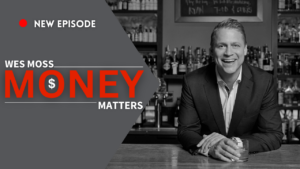Change is a scary thing for most individuals. The unknown outcomes or consequences that come with change tend to keep people status quo.
That only seems to be correct when the status quo is either good or at least not bad. Otherwise, people tend to choose change over status quo despite the uncertainty that comes with the change.
Look at the NFL this past year and how many head coaching vacancies there were (if you didn’t see, it was six), and all of the vacancies were at teams that saw worse rather than “not bad” seasons.
We can look at my favorite team—the Georgia Bulldogs. Change always seems to be a desired outcome for Bulldog football fans because nothing (other than a national championship) is acceptable (this is for another day’s discussion).
As the season ended for the Dawgs, many fans were calling for some sort of change. This did not happen right away, and many people were having somber feelings about the upcoming season, despite just seeing the past one end.
This changed quickly. After the current defensive coordinator bolted to another gig and Georgia was able to lure in the reigning national championship defensive coordinator, all modes changed. Now we were back to where all fans tend to be… we are surely going to win the national championship this year! Euphoria has re-emerged in Athens, and I hope that it is warranted, but change doesn’t always lead to positive outcomes. Continuity tends to be a recipe for continued success.
The markets are another area where change tends to only be desirable when progress is below status quo, as in recent weeks. Otherwise, change leads to questions and is less desirable, which is actually a backwards way of thinking.
A year ago, I ran some numbers on the S&P 500 to see how it has done since the market bottom on March 9, 2009. I wanted to see what would happen if investors missed just a couple of the best days, and what I found was that investors were setting themselves back considerably.
Given the recent market struggles and the concerns surrounding emerging markets, I decided to run this analysis again as people begin entering the phase of a below status quo environment.
If we were to look at the market returns from March 9, 2009 thru December 31, 2013, the S&P was up 173.21%. If we were to miss the five best days during this period, our return would drop to being up just 109.68%. But removing the top 10 days over this period drastically changes our return… we would be up only 73.90%; this is great, but it is 100% less than buying and holding over this period of time!
The biggest caveat to all of this research is that the best days tended to occur during the markets’ worst periods (or the below status quo environments). Three of the 10 best days occurred in March 2009, before anyone knew that the bottom had occurred. Another three of the best days occurred in August 2011 at the height of the U.S. seeing its debt downgraded and complete dysfunction in Washington. Two more of the best days occurred while the political dysfunction continued in October and November 2011. One of the other best days occurred in April 2009, just after we experienced the bottom of the market correction. (The other best day occurred in May 2010).
The point being that the best days tend to occur around the periods of time with the most dysfunction. This is also the period of time that most investors feel that things are below status quo, thus wanting to make changes. Consistency in your investments is key to longer term success; and change should occur when things are status quo or better, not when they are below status quo.









